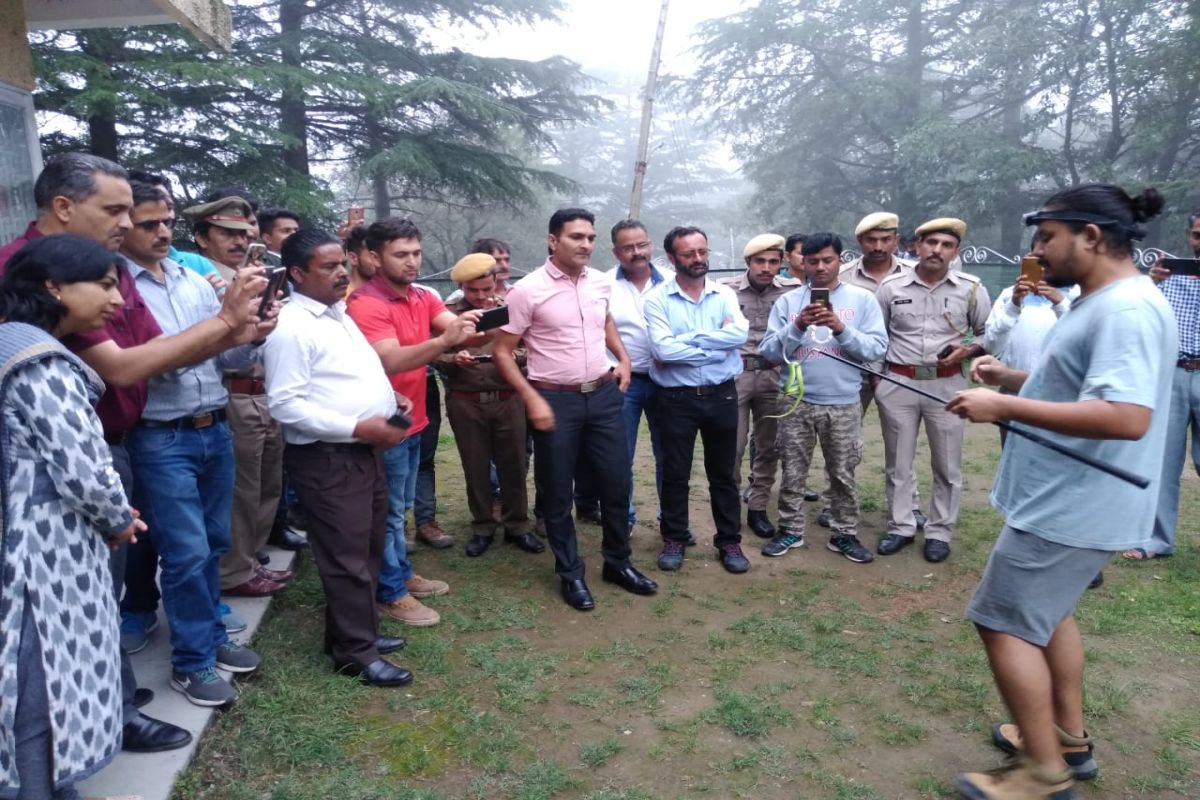Congress govt in Himachal failed to fulfil a single in two years: LoP
Leader of the Opposition and former chief minister Jai Ram Thakur accused the Congress government of failure to fulfill its promises and guarantees in the last two years.
The exercise started with Solan and Shimla districts here, wherein forest guards and some other officials were given a live demonstration on snake rescue by a team of experts from ‘Simultala Conservationists’, an NGO working on snakebite rescue and conservation in West Bengal, and Bangor University, UK.

The team also distributed snake rescue kits for the forest department after training. (SNS)
In what can help mitigating snakebites and conserve the reptile, the foresters in Himachal Pradesh are getting hands-on training on snake rescue in a scientific manner.
The exercise started with Solan and Shimla districts here, wherein forest guards and some other officials were given a live demonstration on snake rescue by a team of experts from ‘Simultala Conservationists’, an NGO working on snakebite rescue and conservation in West Bengal, and Bangor University, UK.
Advertisement
Snakebites are common in Himachal in Monsoons, but so far there is no formal and official mechanism for scientific snake rescue in the state, and it is more a subject of ‘individual choice’ in wildlife wing.
Advertisement
The team, led by Dr Anita Malhotra, a molecular ecologist from Bangor University in the UK has collaborated with the wildlife wing of the forest department over last two years for a larger study on snake species of Himachal Pradesh with regard to venom variation and genetic profiling for effective anti-venom strategy with an international grant.
The team is permitted by Himachal Pradesh forest department to capture snakes from the jungle to take blood and scale samples for genetic profiling and venom samples for anti-venomics, before releasing the reptiles back into the same habitat.
The training on snake rescue has also been made a part of it since last year, covering different districts, along with the provision of scientifically designed and standardized snake rescue kits for the forest department. The project this year is funded by the Bangor University ESRC Impact Acceleration Account, with Dr Anita Malhotra as project lead.
“Snake rescue is an important step for conservation and mitigation of snakebites. We don’t have to kill snakes, we need to learn rescue and release them back to their habitat,” said Vishal Santra, a noted snake conservationist from Hooghly district of West Bengal, who runs Simultala Conservationists.
Santra, along with his team, captured three snakes, venomous and non-venomous, including Green Pit Viper ( venomous) and Common Krait (highly venomous), from the jungle and gave training to the foresters on them. While forest guards were curious to learn practically and tried their hands on snake rescue, as they get calls off and on from the people whenever a snake enters their house or any other building and are often helpless on rescue for lack of scientific knowledge, training and equipment, Divisional Forest Officer (wildlife) Shimla, Rajesh Sharma too rescued Common Krait during training.“It is a must for the foresters. It is first such systemic and practical training on snake rescue. We need to have more such exercises,” the DFO said.
The team also distributed snake rescue kits for the forest department after training.
Before the live demonstration, Santra gave a detailed presentation on snakes and the identification, biological aspects and snakebite management. Santra said out of 300 snake species in the country, only 60 are venomous.
He told the foresters that the team had spotted Central Asian Cobra ( Naja Oxiana) in Chamba district last year and for the first time, confirmed the species genetically.
“We gave seven samples of dead snakes (road kills), including one of Central Asian Cobra to Zoological Survey of India (ZSI) in Solan,” he said. The team proposes to do follow-up training to further strengthen the skills of newly trained rescuers.
It is pertinent to mention that around 50,000 people die of snakebites in India every year.
Advertisement